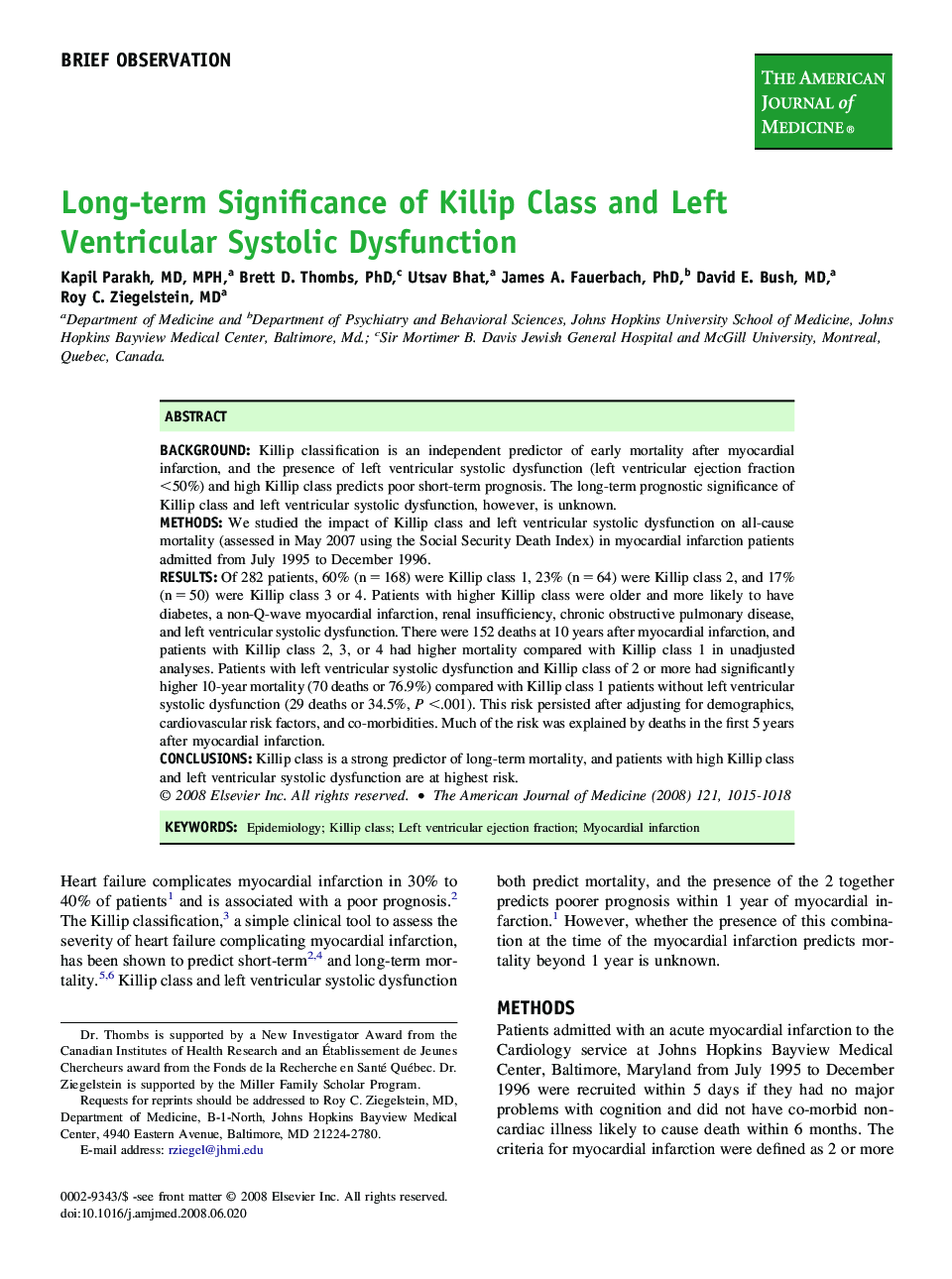| Article ID | Journal | Published Year | Pages | File Type |
|---|---|---|---|---|
| 2720592 | The American Journal of Medicine | 2008 | 4 Pages |
BackgroundKillip classification is an independent predictor of early mortality after myocardial infarction, and the presence of left ventricular systolic dysfunction (left ventricular ejection fraction <50%) and high Killip class predicts poor short-term prognosis. The long-term prognostic significance of Killip class and left ventricular systolic dysfunction, however, is unknown.MethodsWe studied the impact of Killip class and left ventricular systolic dysfunction on all-cause mortality (assessed in May 2007 using the Social Security Death Index) in myocardial infarction patients admitted from July 1995 to December 1996.ResultsOf 282 patients, 60% (n = 168) were Killip class 1, 23% (n = 64) were Killip class 2, and 17% (n = 50) were Killip class 3 or 4. Patients with higher Killip class were older and more likely to have diabetes, a non-Q-wave myocardial infarction, renal insufficiency, chronic obstructive pulmonary disease, and left ventricular systolic dysfunction. There were 152 deaths at 10 years after myocardial infarction, and patients with Killip class 2, 3, or 4 had higher mortality compared with Killip class 1 in unadjusted analyses. Patients with left ventricular systolic dysfunction and Killip class of 2 or more had significantly higher 10-year mortality (70 deaths or 76.9%) compared with Killip class 1 patients without left ventricular systolic dysfunction (29 deaths or 34.5%, P <.001). This risk persisted after adjusting for demographics, cardiovascular risk factors, and co-morbidities. Much of the risk was explained by deaths in the first 5 years after myocardial infarction.ConclusionsKillip class is a strong predictor of long-term mortality, and patients with high Killip class and left ventricular systolic dysfunction are at highest risk.
